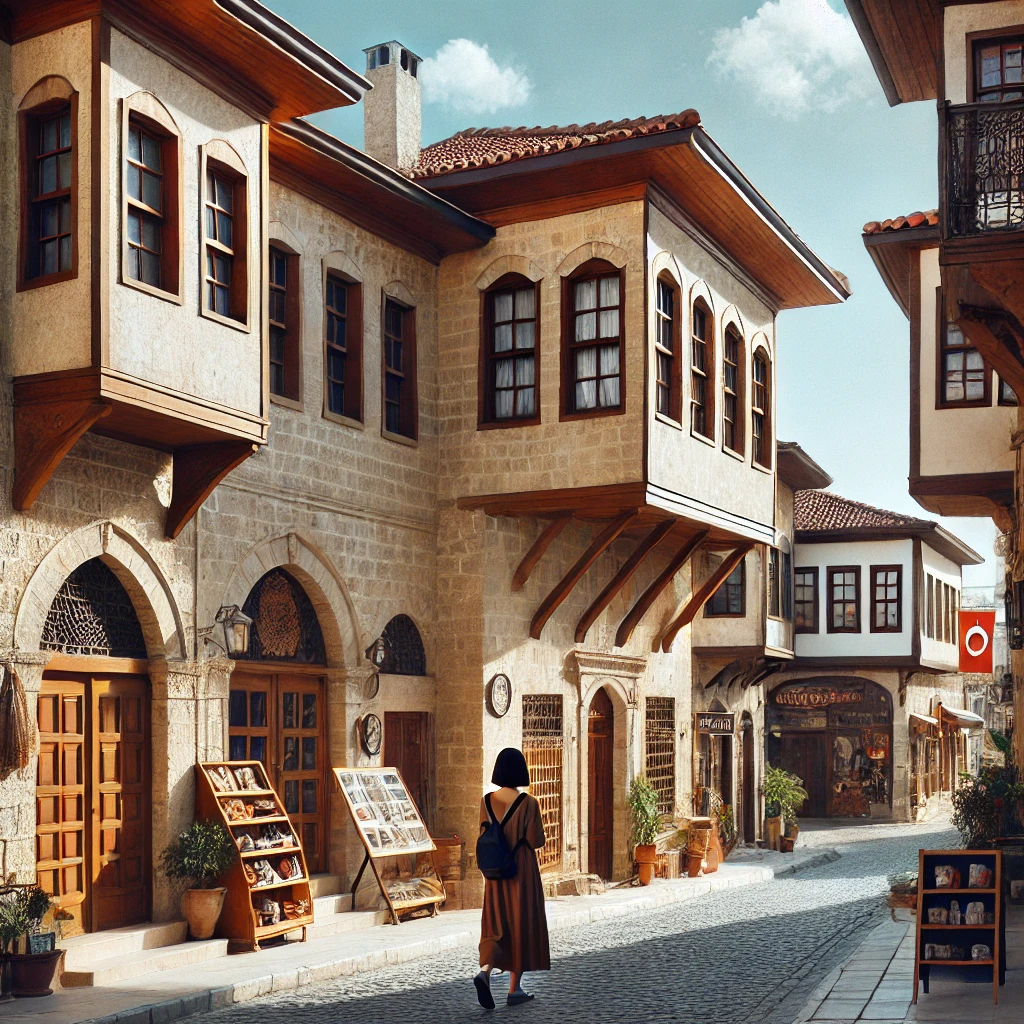ChatGPT:
Gaziantep, often called “Antep,” is one of Turkey’s oldest cities, boasting a rich blend of history, culture, and culinary traditions. Here’s an overview of its origin, history, geography, and development:
Origin and History
1. Ancient Origins:
• Gaziantep’s history dates back to around 4,000 BCE, making it one of the oldest continuously inhabited cities in the world. It was known in ancient times as Doliche during the Hellenistic and Roman periods.
• The region has been influenced by numerous civilizations, including the Hittites, Assyrians, Persians, Greeks, Romans, Byzantines, Arabs, and eventually the Seljuk and Ottoman Turks.
2. Medieval Era:
• During the Islamic period, the city gained significance as a trading hub and a cultural center. It was strategically located on the Silk Road, connecting Anatolia to Mesopotamia.
• Under the Ottoman Empire, Gaziantep flourished as a key city for commerce and craft industries, particularly in copper, textiles, and leatherwork.
3. Modern History:
• In 1921, the city was awarded the honorific title “Gazi” (meaning “veteran” in Turkish) for its citizens’ heroism during the Turkish War of Independence against French occupation forces. This event solidified its identity as “Gaziantep.”
• Post-independence, Gaziantep became an important industrial and agricultural hub for Turkey.
Geography
1. Location:
• Gaziantep is located in southeastern Turkey, near the Syrian border. It serves as a bridge between Anatolia and Mesopotamia, a fact that has contributed to its strategic and cultural importance.
2. Topography:
• The city lies on a fertile plateau, surrounded by rolling hills and the southern extension of the Taurus Mountains.
• The Euphrates River is located to the east, providing water resources for agriculture.
3. Climate:
• Gaziantep experiences a continental climate, with hot, dry summers and cold, wet winters.
Development
1. Economic Growth:
• Agriculture: Gaziantep has long been a center for pistachio production, which is integral to its economy and cuisine.
• Industry: Today, it is one of Turkey’s largest industrial centers, specializing in textiles, machinery, and food processing.
• Commerce: Its historical position on trade routes has modernized into active international trade, especially with the Middle East.
2. Culture and Tourism:
• Gaziantep is renowned for its culinary heritage, particularly baklava, earning it UNESCO Creative City of Gastronomy status.
• The Gaziantep Zeugma Mosaic Museum houses mosaics from the ancient city of Zeugma, one of the largest collections in the world.
• Historical bazaars like the Copper Bazaar and numerous Ottoman-era buildings contribute to its cultural richness.
3. Infrastructure:
• Gaziantep has developed a modern urban infrastructure, with universities, hospitals, and transportation networks supporting its growing population and economy.
• The Gaziantep Airport connects it to major cities in Turkey and abroad.
Cultural Significance
Gaziantep is a symbol of resilience and cultural fusion. Its cuisine, architecture, and traditions reflect centuries of interaction between diverse civilizations. From its ancient ruins to its thriving modern economy, the city continues to be a vital part of Turkey’s cultural and economic landscape.
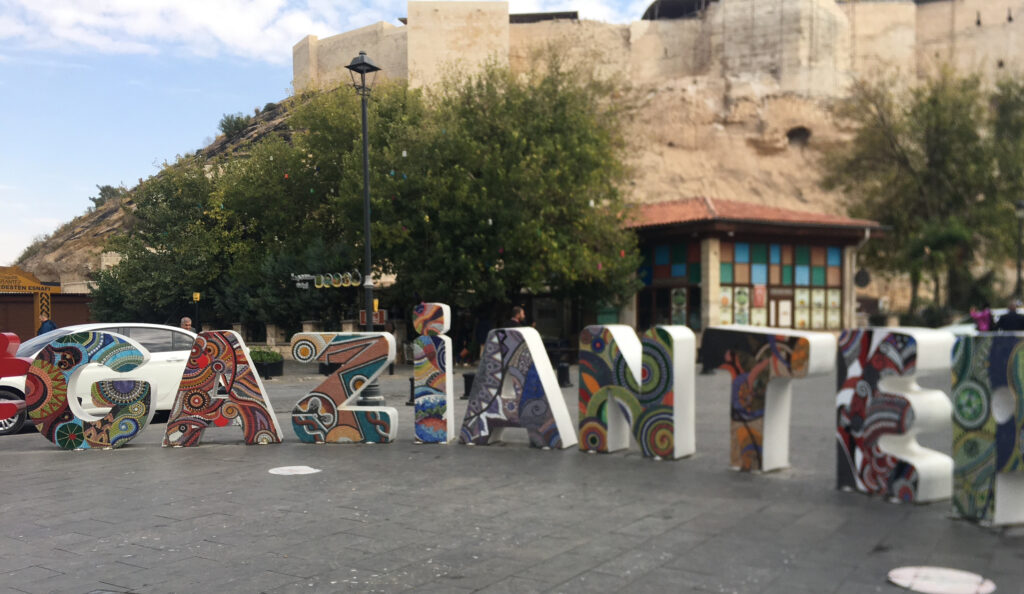
Gaziantep boasts a rich array of historical monuments and tourist attractions, reflecting its deep cultural heritage and strategic importance throughout history. Here’s a list of some must-see sites in the city:
Historical Monuments
1. Gaziantep Castle (Gaziantep Kalesi)
• A well-preserved hilltop fortress dating back to Roman times, later fortified by the Byzantines and Ottomans.
• Includes the Gaziantep Defense and Heroism Panorama Museum, showcasing the city’s resistance during the Turkish War of Independence.
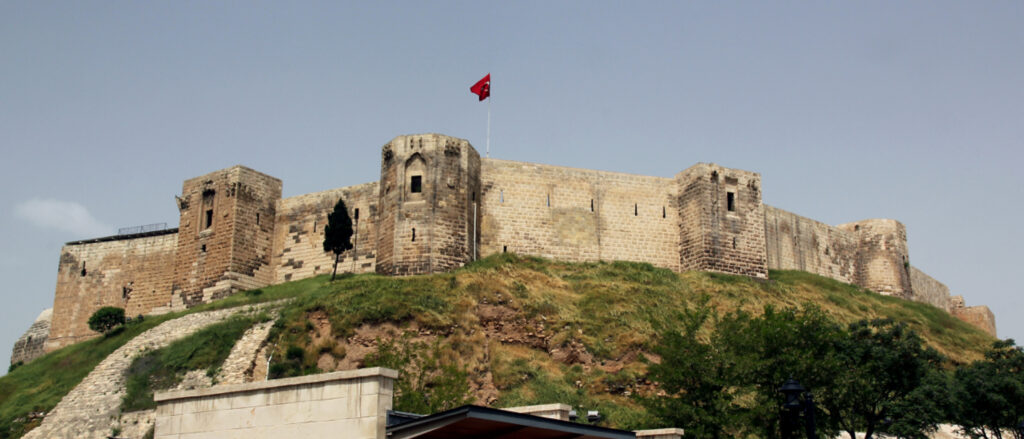
2. Zeugma Mosaic Museum
• The world’s largest mosaic museum, featuring stunning mosaics from the ancient city of Zeugma.
• Highlights include the famous Gypsy Girl Mosaic and other intricate Roman-era mosaics.
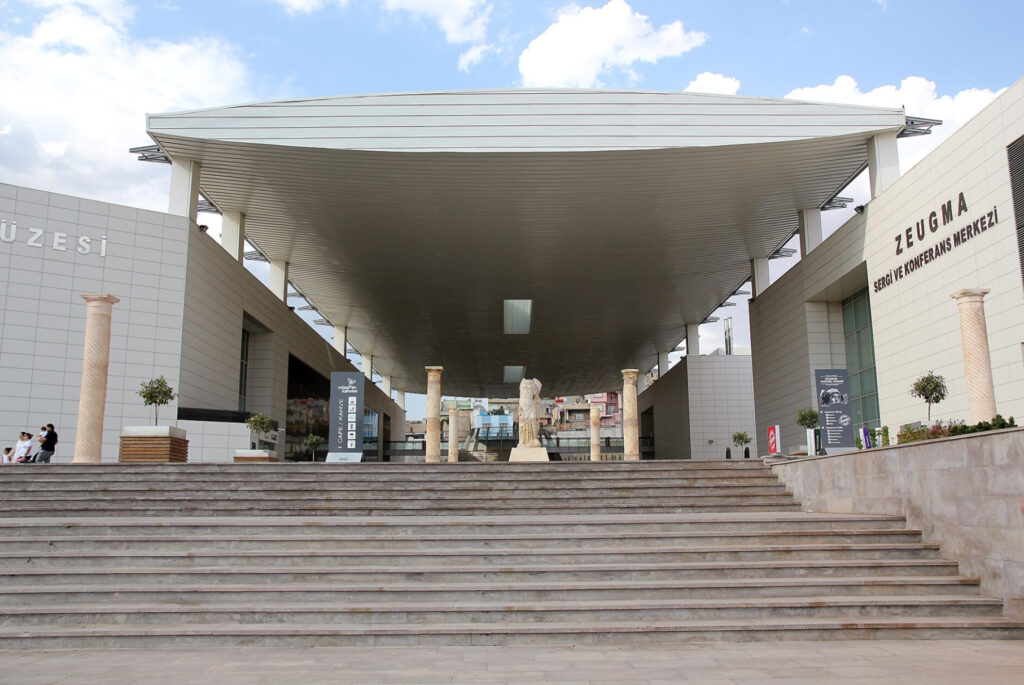
3. Rumkale (Roman Castle)
• A striking fortress perched on cliffs overlooking the Euphrates River.
• Accessible by boat, offering breathtaking views and a glimpse into its Roman and Byzantine past.
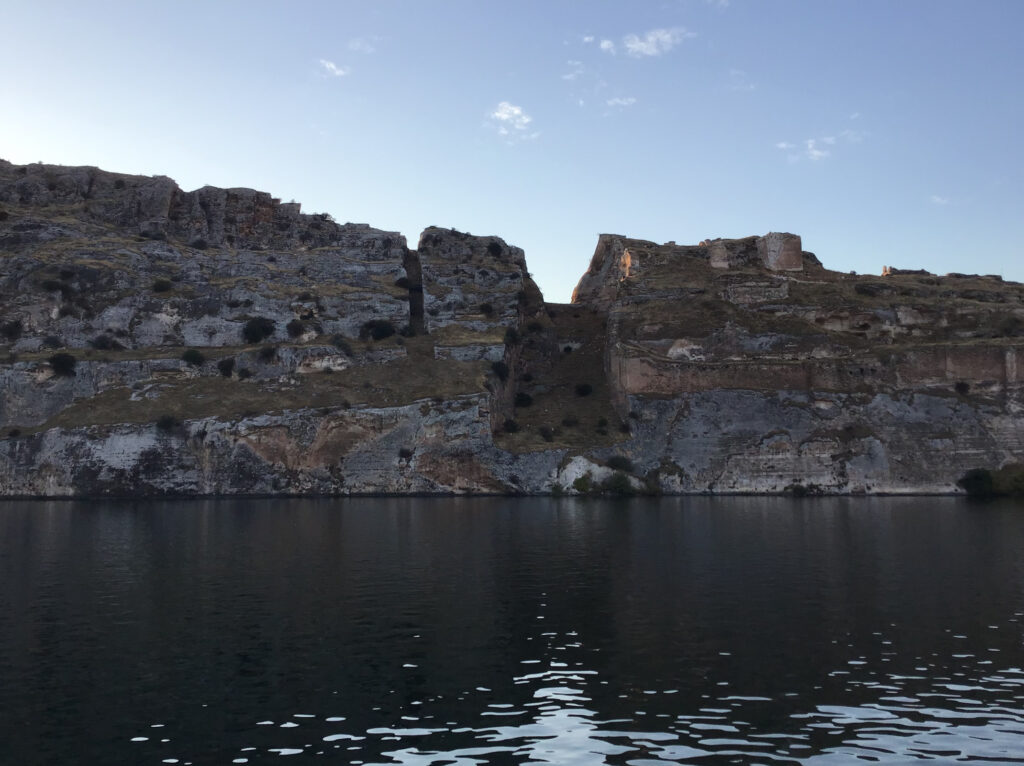
4. Bayazhan Gaziantep City Museum
• An Ottoman-era han (caravanserai) turned into a museum showcasing Gaziantep’s history, culture, and traditions.
5. Ömeriye Mosque
• The oldest mosque in Gaziantep, built in the 11th century by the Seljuks.
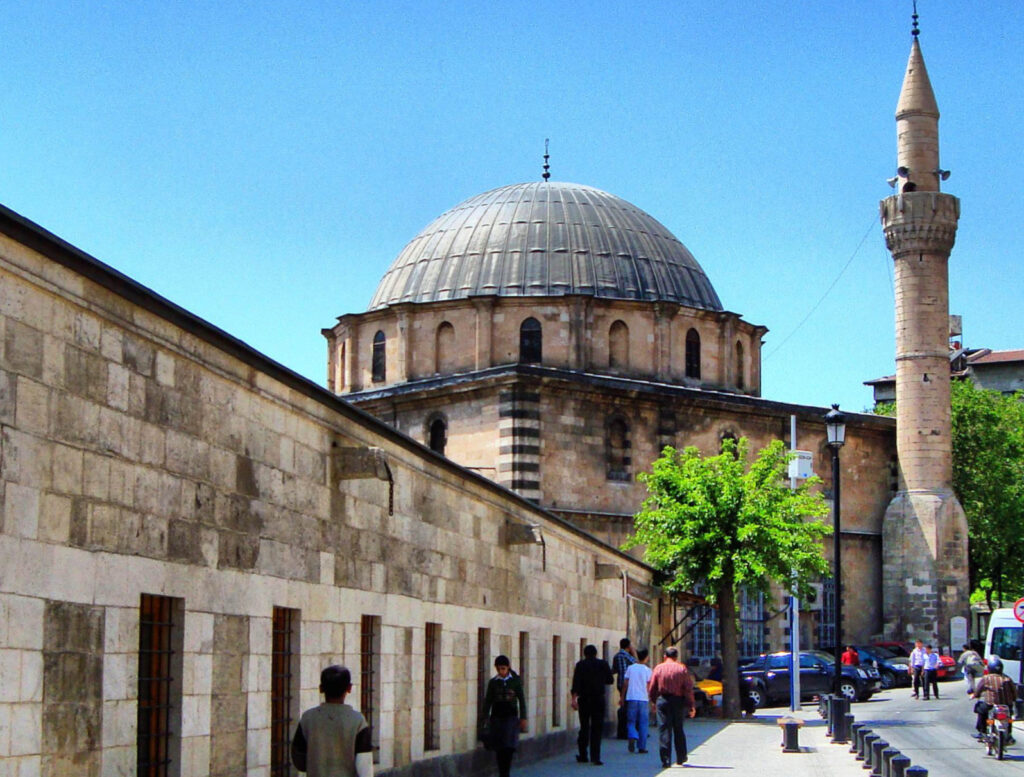
6. Tütün Hanı
• A historical Ottoman caravanserai used for tobacco trade, now hosting shops and cafes.
7. Tahmis Coffeehouse
• A historic coffeehouse from the 17th century, famous for its traditional Menengic coffee made from wild pistachios.
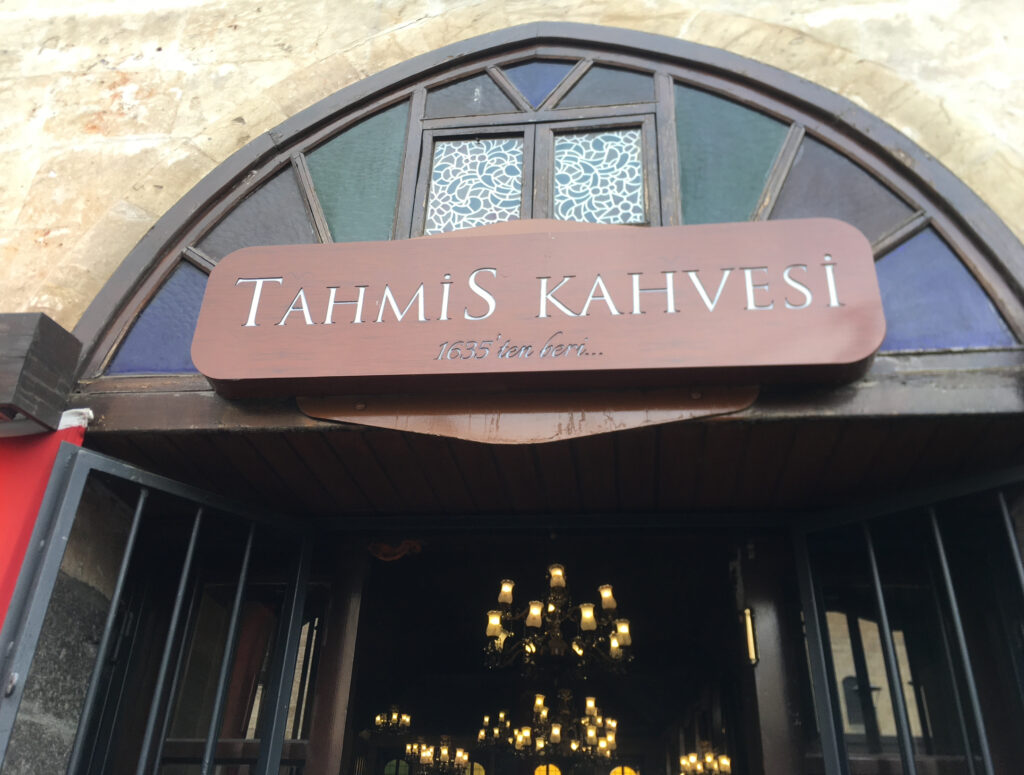
Museums
1. Gaziantep Archaeological Museum
• Features artifacts from ancient settlements, including items from the Neolithic and Bronze Ages.
2. Gaziantep War Museum
• Located in an old house, this museum honors the city’s resistance during the Turkish War of Independence.
3. Emine Göğüş Culinary Museum
• Dedicated to Gaziantep’s world-renowned cuisine, offering insights into traditional cooking techniques and recipes.
4. Hasan Süzer Ethnography Museum
• A restored Ottoman mansion showcasing traditional Antep life and culture.
5. Mevlevihane Foundation Museum
• Once a dervish lodge, this museum highlights Sufi traditions and the Mevlevi Order.
Bazaars and Markets
1. Zincirli Bedesten
• An Ottoman-era covered bazaar, perfect for shopping for spices, copperware, and handicrafts.
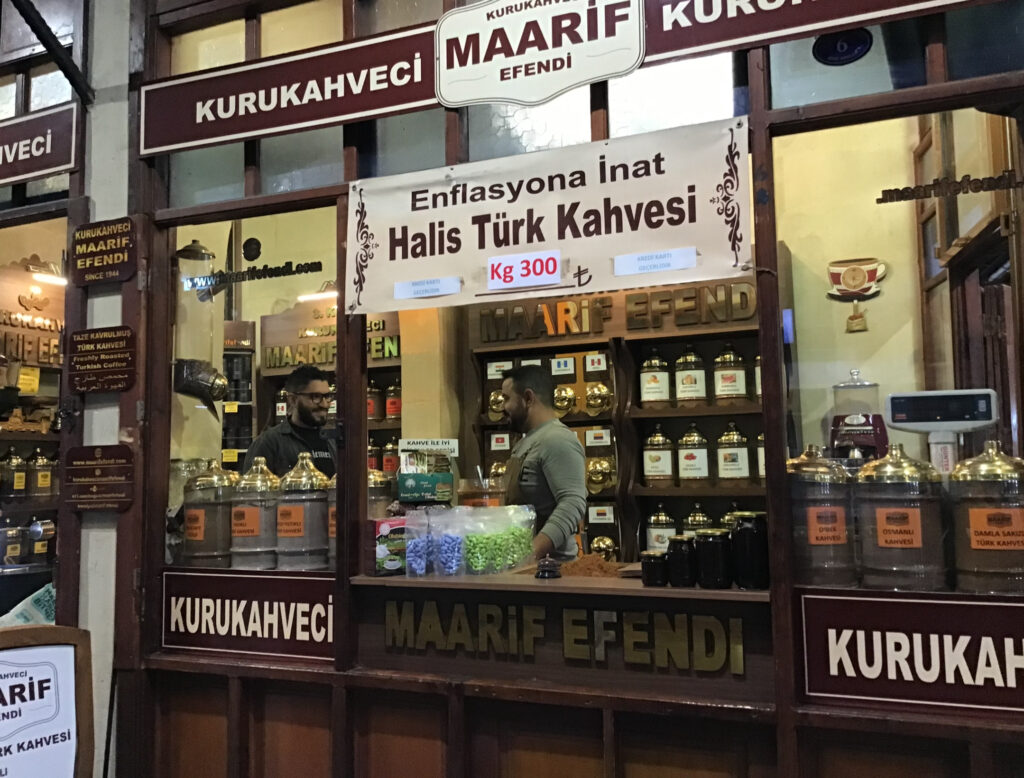
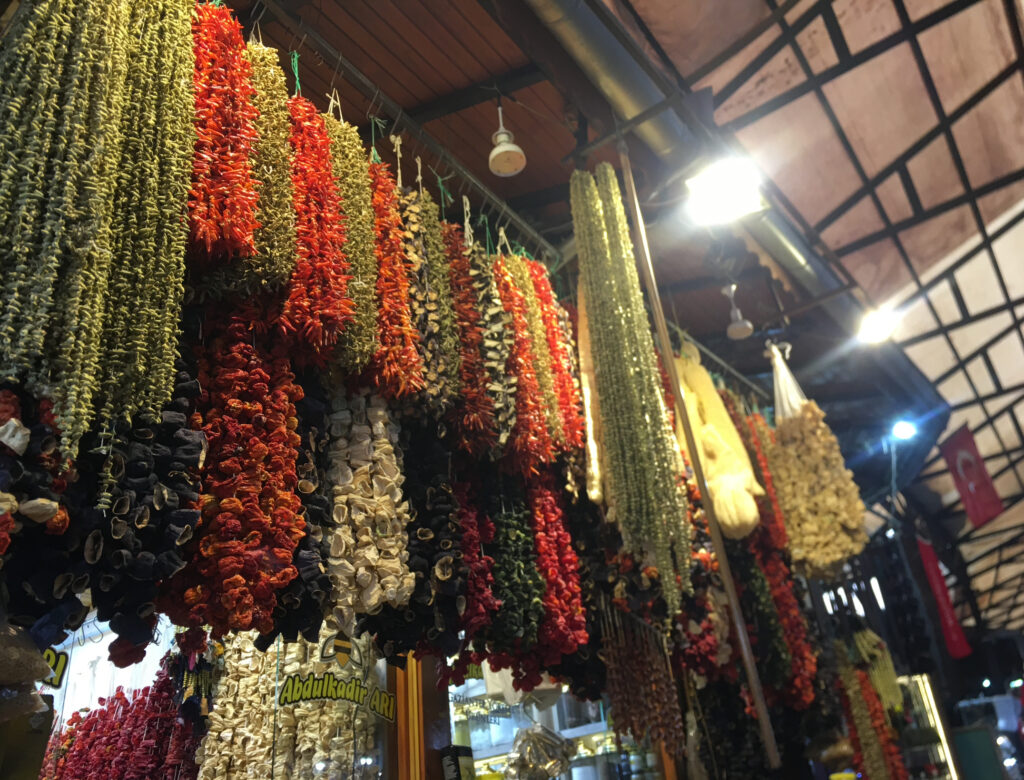
2. Elmaci Bazaar
• A vibrant market offering local delicacies like pistachios, dried fruits, and spices.
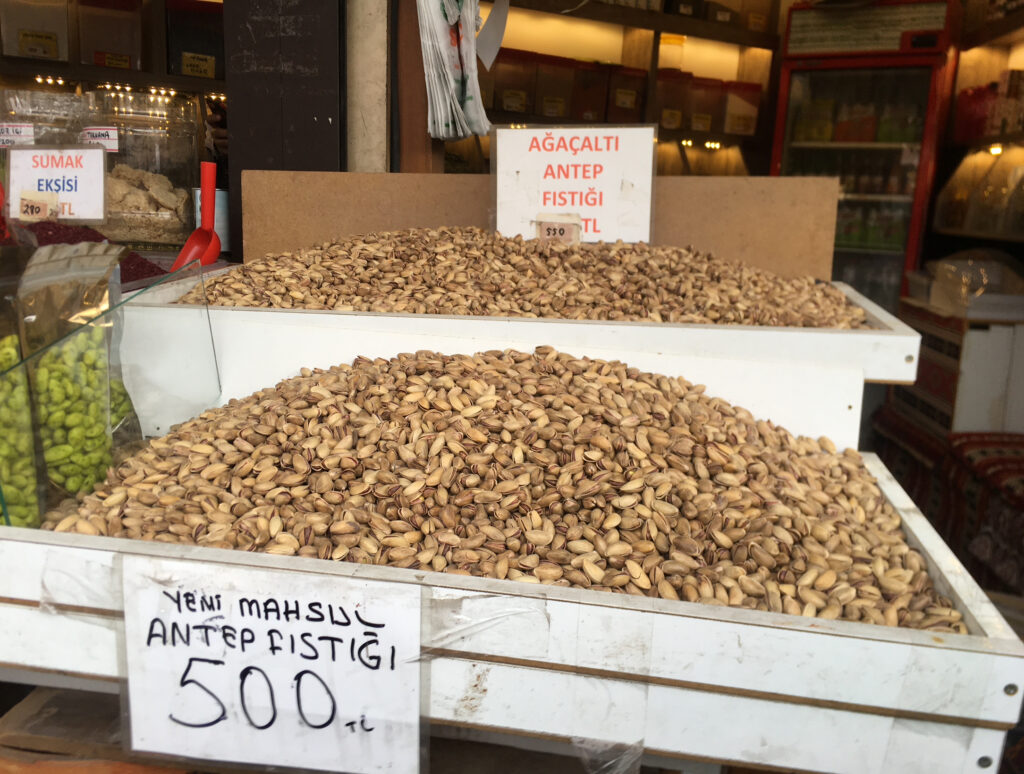
3. Coppersmith Bazaar (Bakırcılar Çarşısı)
• Famous for its handmade copper items, a tradition dating back centuries.
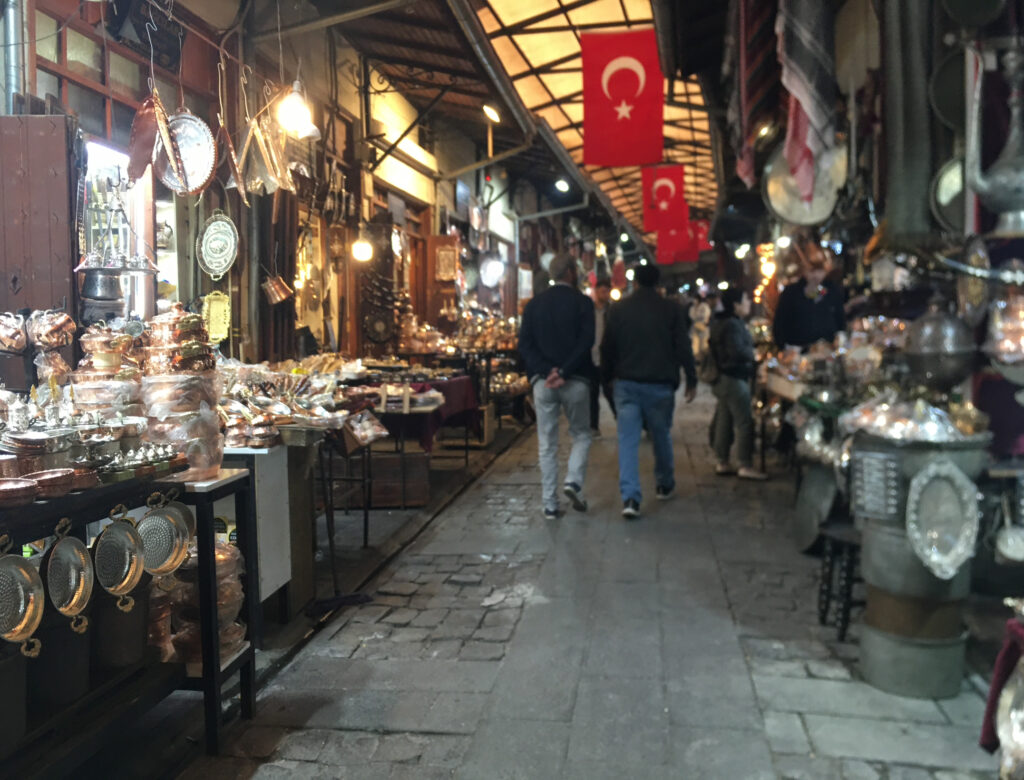
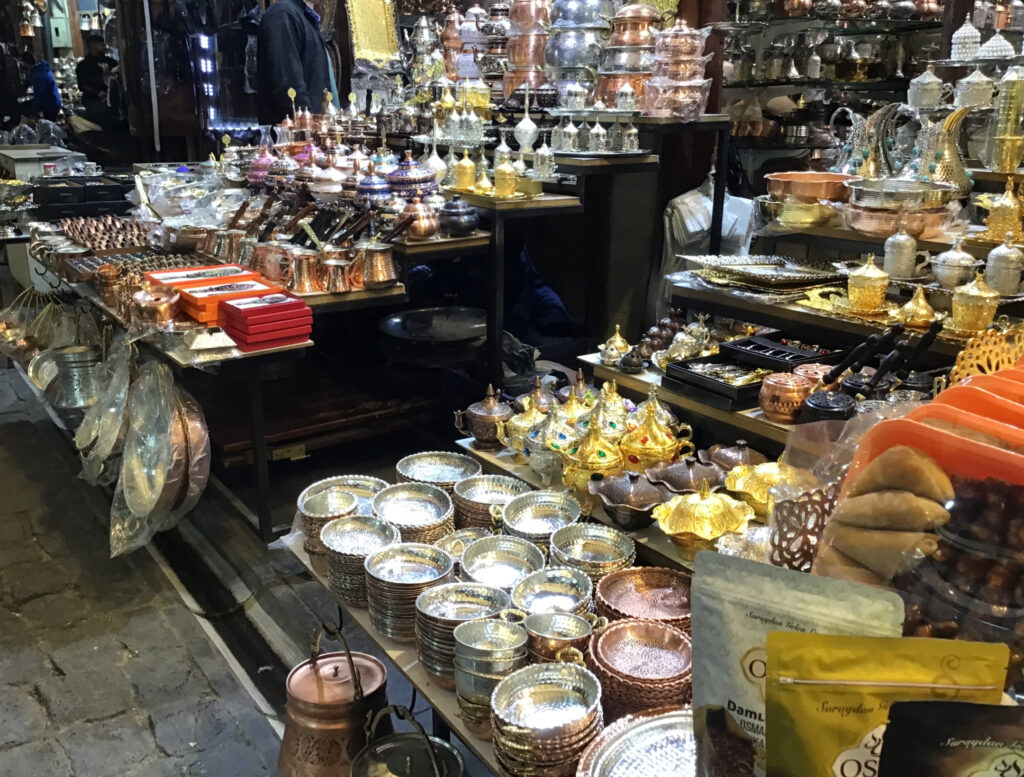
Natural and Cultural Attractions
1. Yesemek Open-Air Museum
• An ancient Hittite stone quarry and sculpture workshop, showcasing large basalt statues and reliefs.
2. Duluk Ancient City and Forest
• One of the oldest settlements in Anatolia, with caves and ancient ruins surrounded by a serene forest.
3. Sof Dağı (Mount Sof)
• A beautiful natural area ideal for picnics, hiking, and enjoying panoramic views of the city.
Culinary Attractions
1. Gaziantep Baklava Shops
• Famous spots like Imam Çağdaş are perfect for sampling authentic baklava.
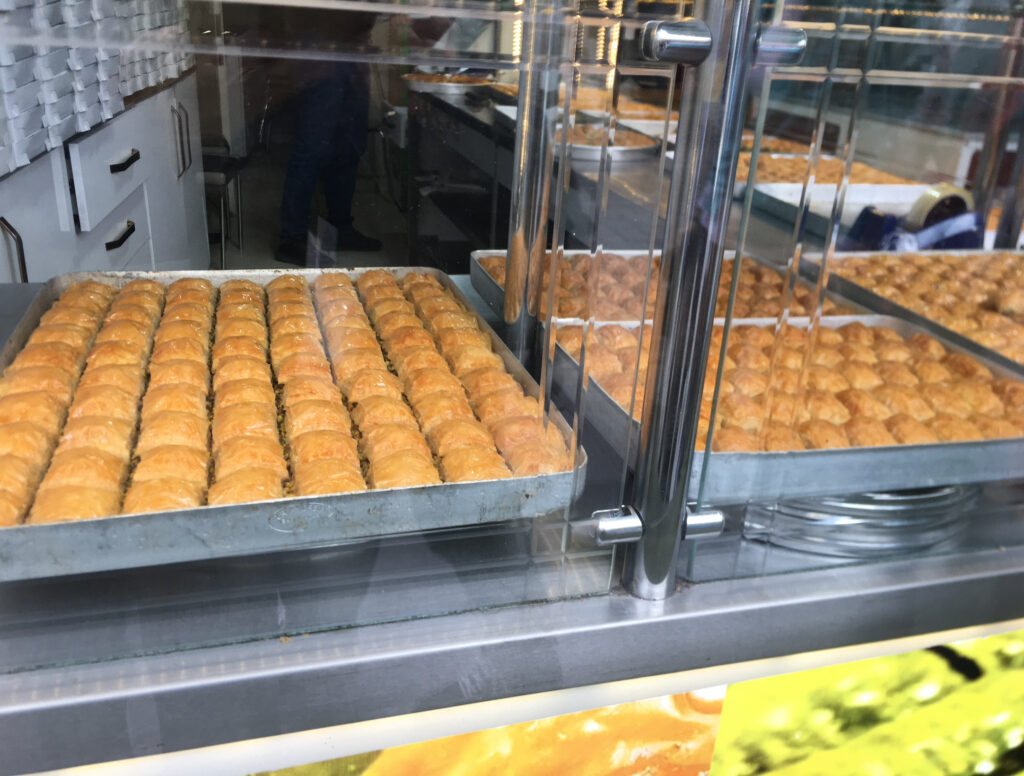
2. Local Restaurants
• Try traditional dishes like küşleme (lamb tenderloin), beyran soup, and ali nazik kebab at local eateries.
Nearby Attractions
1. Zeugma Ancient City
• An important Roman city near the Euphrates River, known for its exquisite mosaics and archaeological significance.
2. Halfeti (Sunken City)
• A partially submerged village with picturesque landscapes, accessible via a short drive from Gaziantep.
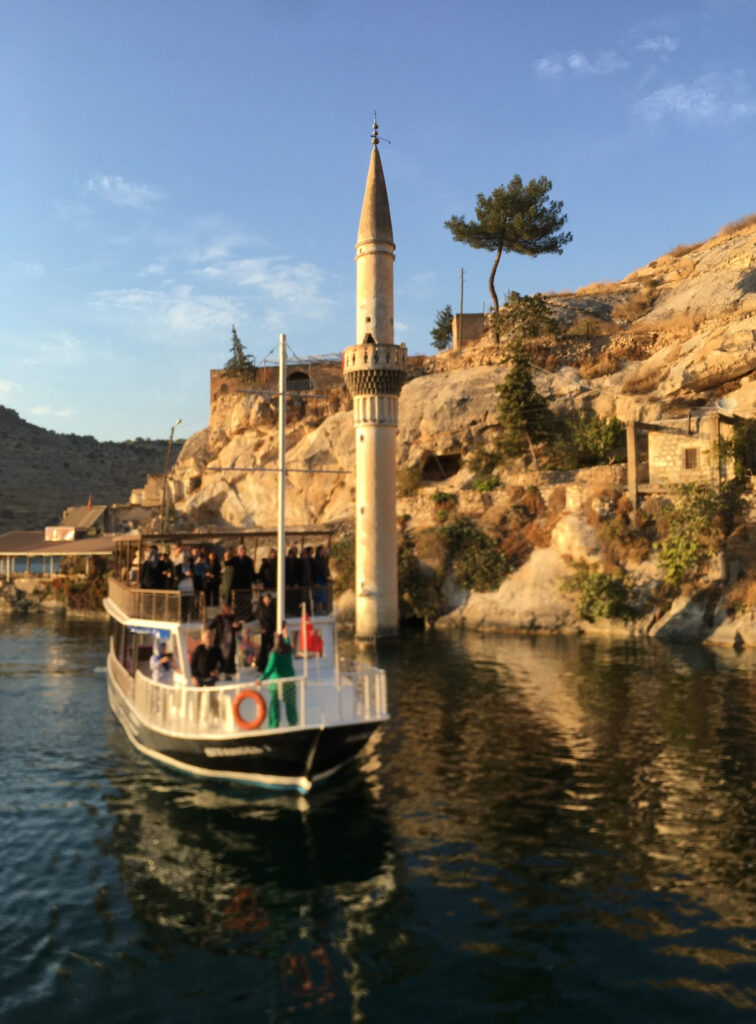
This diverse list makes Gaziantep a perfect destination for history enthusiasts, food lovers, and travelers seeking a mix of culture and natural beauty.
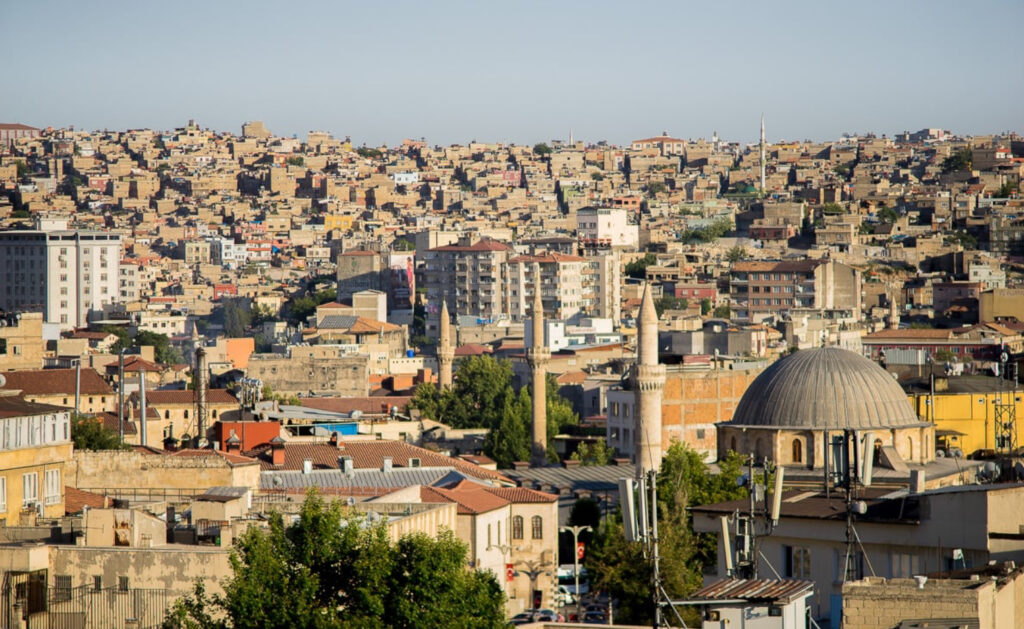
One-Day Itinerary for Gaziantep
This itinerary focuses on Gaziantep’s rich history, vibrant bazaars, and world-renowned culinary scene, ensuring a memorable day.
Morning
1. Breakfast at Orkide Pastanesi (7:30 AM – 9:00 AM)
• Start your day with a traditional Gaziantep breakfast. Try katmer (flaky pastry filled with pistachios and cream) and pair it with a glass of strong Turkish tea.
2. Gaziantep Castle and Panorama Museum (9:15 AM – 10:30 AM)
• Visit this iconic fortress to explore its history and enjoy panoramic views of the city.
• Tour the museum inside, which tells the story of Gaziantep’s resistance during the Turkish War of Independence.
3. Zeugma Mosaic Museum (10:45 AM – 12:30 PM)
• Immerse yourself in the ancient world through stunning mosaics from the Roman city of Zeugma.
• Don’t miss the famous Gypsy Girl Mosaic and the intricate Roman-era artifacts.
Lunch
4. Lunch at Imam Çağdaş (12:45 PM – 2:00 PM)
• A legendary restaurant in Gaziantep’s old town. Must-try dishes include:
• Beyran soup (a spicy lamb soup, perfect for meat lovers).
• Ali Nazik kebab (grilled lamb served over smoky eggplant purée).
• Finish with a slice of their famous baklava, made with local pistachios.
Afternoon
5. Coppersmith Bazaar (Bakırcılar Çarşısı) (2:15 PM – 3:15 PM)
• Wander through this atmospheric bazaar and admire (or purchase) handcrafted copperware, a craft deeply rooted in the city’s history.
6. Tahmis Coffeehouse (3:30 PM – 4:15 PM)
• Relax at this historic 17th-century coffeehouse and try a cup of menengic coffee, made from wild pistachios for a unique local flavor.
7. Gaziantep Archaeological Museum (4:30 PM – 5:30 PM)
• Explore ancient artifacts from Gaziantep’s millennia-old history, including Hittite and Roman pieces.
Evening
8. Shopping and Strolling in Elmaci Bazaar (5:45 PM – 6:30 PM)
• Shop for local delicacies like pistachios, spices, and dried peppers. The vibrant stalls make for a delightful sensory experience.
Dinner
9. Dinner at Kebapçı Halil Usta (7:00 PM – 8:30 PM)
• End your day with Gaziantep’s famous kebabs. The küşleme (lamb tenderloin) is a standout dish, accompanied by freshly baked bread and salads.
Optional Evening Activity
10. Stroll in Gaziantep City Park (8:45 PM – 9:30 PM)
• If time permits, enjoy a peaceful evening walk in this scenic park to unwind after your cultural and culinary adventures.
This itinerary provides a perfect blend of Gaziantep’s history, markets, and gastronomy, ensuring a fulfilling experience within a single day.
